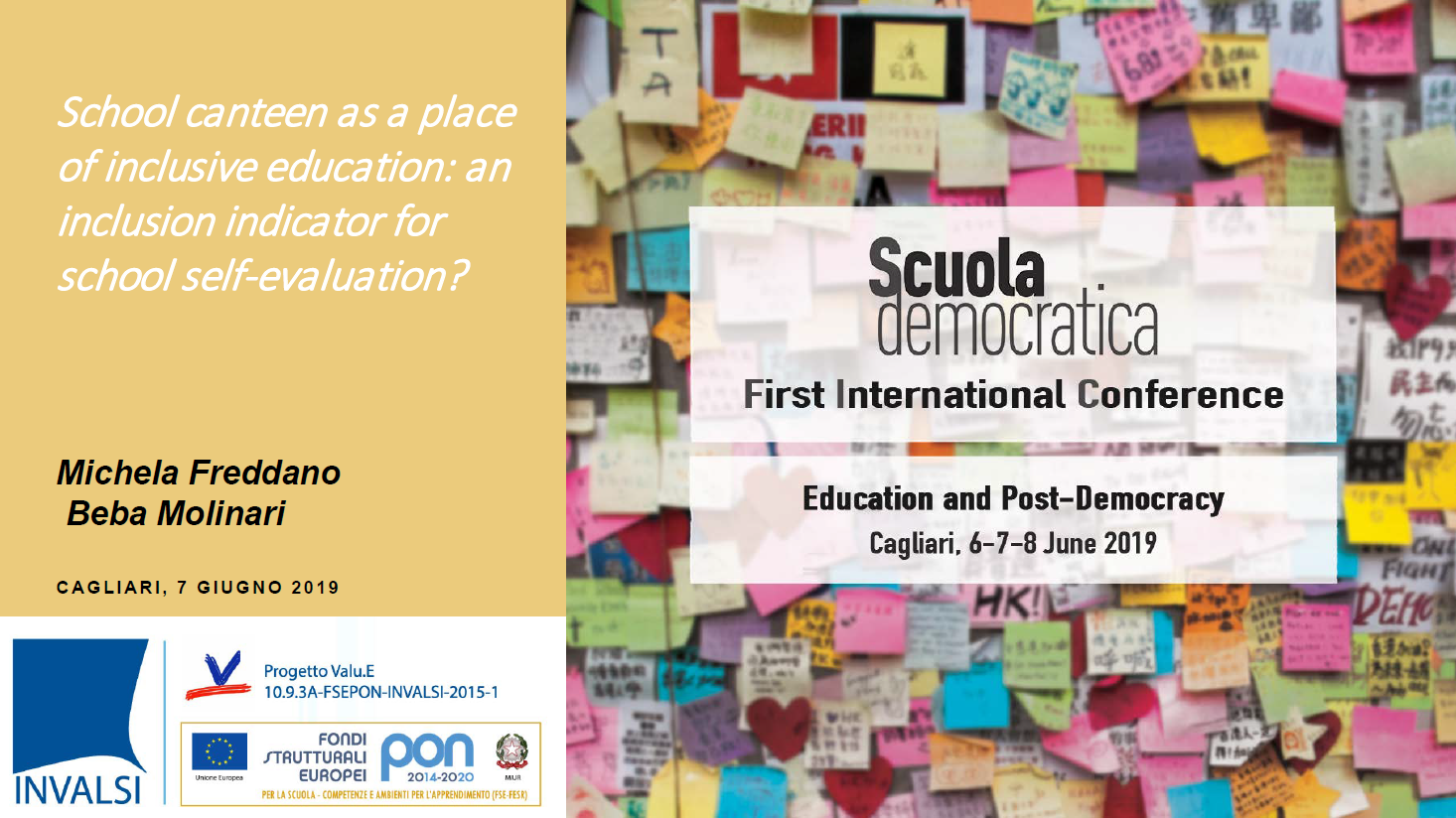School canteen as a place of inclusive education: an inclusion indicator for school self-evaluation?
Quote
Freddano, M. & Molinari, B. (2019, June 6-8). School canteen as a place of inclusive education: an inclusion indicator for school self-evaluation? [paper presentation]. Education and Post-Democracy – 1st International Conference of the Journal «Scuola Democratica», Cagliari, Italy.
Description
Having lunch at a school canteen is a moment of socialization that a large number of students and teachers live within their own school experience. Having lunch during curricular time is often associated with full-time courses at school. As Save The Children (2018) shows, to access a quality school catering service and to enjoy school full-time are important aspects of social inclusion for children. At the same time, they are tools to improve practices of inclusive education and to avoid educational poverty and phenomenon of micro-exclusions. In Italy, the school catering service is managed at municipal level; the most recent report on the status of school catering service in primary schools in municipalities, provincial capitals, with more of 100.000 inhabitants (Save The Children, 2018), shows that there is a great heterogeneity. Into the 2030 Agenda for Sustainable Development, established by the United Nations and adopted by world leaders in September 2015, the second sustainable development goal “Zero Hunger” suggests “to rethink how we grow, share and consume our food”, towards the achievement of food security, the improvement of nutrition and the promotion of sustainable agriculture. Moreover, according to the Index for inclusion (Booth and Ainscow, 2011), school canteen can signify an organisational resource useful to plan inclusive answers such as other school services (sport group, library and so on), as a part of the dimensions of creating inclusive culture and producing inclusive policies. Starting from this assumptions, the present paper shows the main results of an empirical research focused on food inequality at school, with the aims to know in which Italian schools are there school canteens, what kind of associations are there between the presence of school canteen and the offer of full-time courses at school, and how these associations change when school or individual characteristics (e.g. socio-economic and cultural background) change.
Method
Secondary data analysis had been done on microdata on Italian students and schools of the school year 2015/2016, updated to the 31st august 2016, published by the Italian Ministry of Education, Universities and Research, and available on the website “Portale Unico della Scuola”. These data had been merged with data from the Self-Assessment Reports (Rapporto di Autovalutazione), that schools did for the school year 2015/2016. The frame is the national evaluation system “Sistema Nazionale di Valutazione”, regulated by the Presidential Decree 80/2013 that, since 2015, requires all the Italian schools to do a data-driven school self-evaluation, following a specific format (INVALSI, 2017).
Outcomes
The main results underline social and territorial differences with respect to the presence of the school catering service and with respect to the use of school time. Particular attention was paid to issues related not only to the implications that a possible disparity in the quality of service can contribute to the health of the child, but also to possible consumption dynamics in ecological public health, highlighting any inequality of access (Freddano and Molinari, 2018). The paper also shows the power of secondary data analysis by using data from different source and the strong informative power on school status that the National Evaluation System implies with its development.
Subject
school mealself-evaluation
inclusive education
intercultural relations
arrangement of school time
resource allocation
Interest for
EducatorsEvaluators
Researchers
Families
Rights management
Open access. The document is freely downloadable and usable for non-commercial purposes, provided that the authors are always mentioned as reported in the quote field (author, year, title, etc.).Info
- Version
- Downloads 10
- File Size 751.21 KB
- File Count 1
- Create Date 30 May 2022
- Last Updated 30 May 2022
Print page


